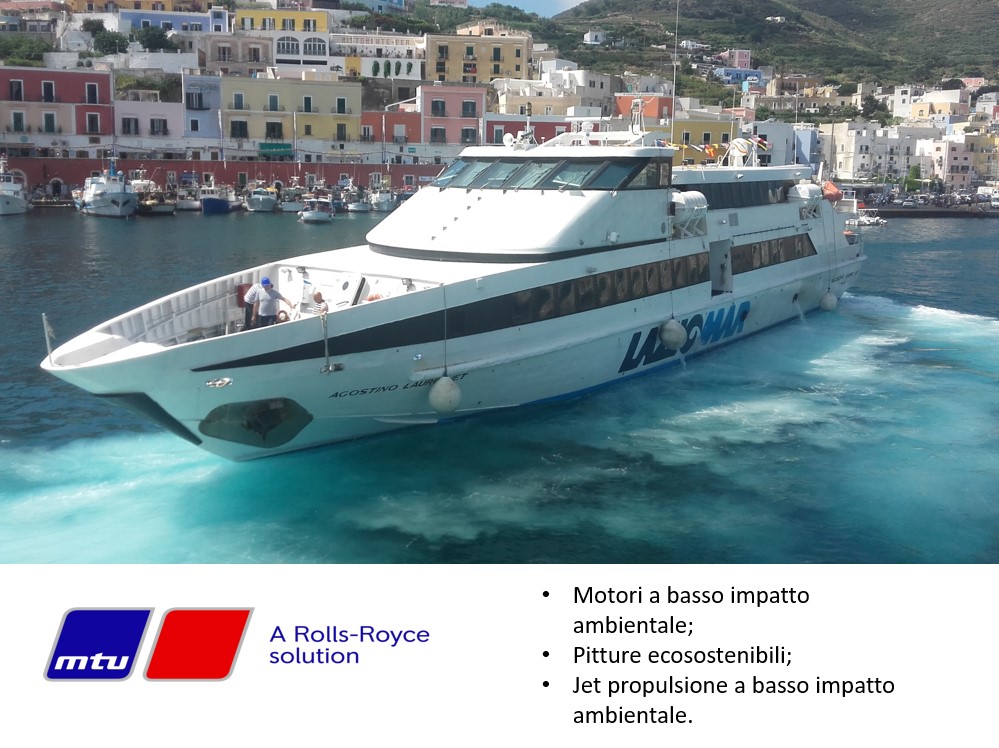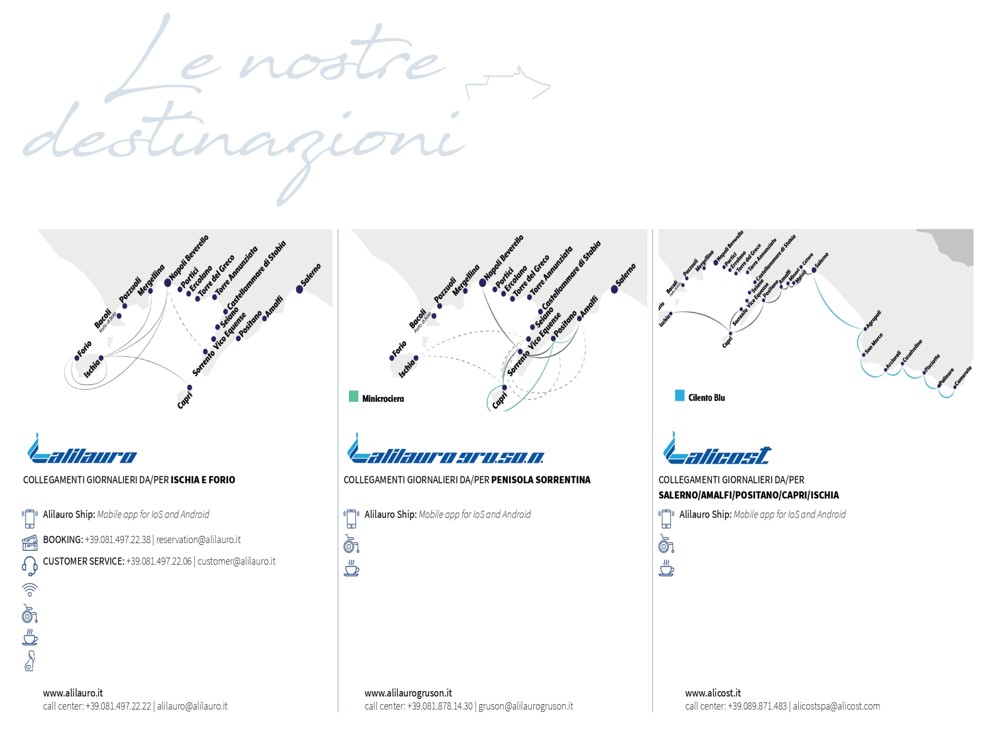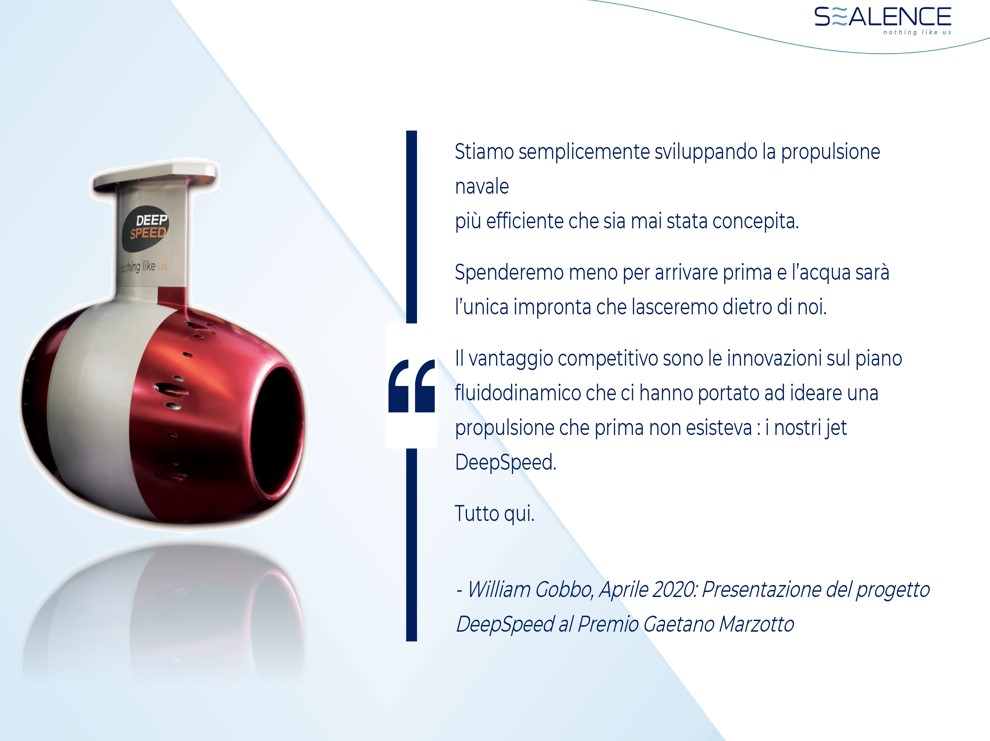Lauro, a dynasty of the sea between tradition and innovation
Honorable Salvatore, son of the pioneer of shipping in the Bay of Naples: “Our commitment with means and technology for sustainability and efficiency on the water, fighting against bureaucracy and inefficiency”

In the beginning was Agostino, born in 1917, for all Ischitans Cartusciello, because they always saw him walking around with an unfailing pack of papers under his arm. Folded up and guarded among that reams of pages were the dreams and very clear ideas of the pioneer who managed to look beyond the blue horizon of his island and ferry Ischia into the future, imagining the sea as a highway and leveraging tourism that could not fail to be attracted by the beauty and charm of a place that seems sculpted by the wind and the gods. Agostino Lauro, the progenitor of a family that has been synonymous with shipping and enterprise for 70 years: an enterprise as blue as the sea that crosses the beautiful Gulf of Naples, on the routes of the fleet that has been plying its crystal-clear waters for decades to connect the mainland with the islands. A long story of a family originally from Sorrento that has always been dedicated to their work. A long and compelling epic of men and the sea, of ships and tourism.
A story that almost seems like an epic because of how it began on a now distant day in 1947, when Agostino set sail from the United States-where he had gone on purpose to attempt the feat-with the “Good Hope,” sixty meters of boat launched into the vastness of the ocean precisely with much faith, the same faith that made him attach an image of Ischia’s patron saint, St. John Joseph of the Cross, near the rudder before he set sail. Six months at the mercy of waves and winds, a storm so severe that he feared the worst and, it is said, the patron saint who appeared to him announcing land within three days: so it was, and Augustine sighted the Las Palmas lighthouse.
The Lauro family’s long route began with the “Freccia del Golfo,” a mass veteran of the war and adapted for passenger transport: Agostino bought it, converted it and put it into service between Ischia and Capri, Procida and Naples, to connect the entire gulf. It was the beginning of a dynasty that since the 1950s, entered among the shipowners of the Gulf, collecting a fleet made up of digs and names that have now entered the company’s history: the Celestina, the Angelina, the Rosaria, the Salvatore Lauro, the Agostino Lauro, the Settebello, the La Città d’Ischia, the Generale Orsini, the Lauro Express, the Anna Maria, up to the Angelina Lauro. All the way to the hydrofoils that were Agostino Lauro’s Copernican spark and revolutionized connections in the Gulf, up to our time in which the Lauro Group has a fleet of 48 fast ships, 600 employees and 3.5 million passengers a year, roughly the same as Rome and Naples combined. A modern company that seeks to combine the value of tradition with the coordinates of a modern route: sustainable, safe, technological and committed to meeting the needs of its customers. Materials, means and solutions more and more dedicated to functionality, efficiency and minimal environmental impact, in the more and more of a way of moving, that on water, with increasingly technological and sophisticated hulls, ships with wings reminiscent of mythological creatures to run on water consuming less and less. A present suspended between the future and a present where private individuals row at full force, to use an aquatic metaphor, and the public is comfortably transported to the stern. Salvatore Lauro, president of Volaviamare and with a long experience as an entrepreneur, enriched by one made as a senator of the Republic, is the second son of Agostino, the only male and with three sisters, Celestina, Anna Maria and Rosaria: in his words, the polaroid of a company that seeks to navigate the future without ever forgetting the route of the founding fathers that brought it here.
“I cannot help but think, looking back to our origins and those of our island, to the years of the Dolce Vita, the film Cleopatra, or the Green Island Corsair. When people from the jet set and cinema came to Ischia to stay, Rizzoli, Marzotto, Charlie Chaplin. It has been seventy years at sea, for our family and our business. Seventy years without ever a lira of public contribution, I would like to emphasize.”

With 2023 we put many things behind us, including the pandemic. Did it affect maritime transport as well?
“Covid gave us a terrible blow, passenger traffic dropped up to 85 percent, but slowly we recovered and now we are back to 2019 levels. The Bay of Naples is the second largest in the world in terms of passenger traffic, 8 million people, and we want to be ready and competitive to do our part. We have chosen high speed by sea, sustainable transportation, safety and comfort that goes all the way to fully digitized online ticketing.”
A Diamond for Italy: the digital dream of Adriano Ippoliti is a reality for Made in Italy
What are the key points for improvement in the maritime sector?
“The issue of concessions and infrastructure for us is very sensitive. There is not, in our public interlocutors, the awareness and the drive to equip themselves with the necessary required for the current and future needs of the nautical and maritime sector. There are no properly equipped piers, and in the activity of the connections we have between Naples and the islands, we find problematic situations. In summer, with the peak of tourists and attendance, the embarkation and disembarkation of passengers become difficult and complex operations.”

Bureaucracy is also an issue that weighs heavily in Italy
“New solutions are needed for the logistics of ticketing and user services, at the moment only the capabilities and preparation of the harbor master’s offices and port authorities guarantee acceptable levels of safety and efficiency. The measures and resources made available to the sector by the NRP are a historic opportunity for the country and the sector, but most municipalities do not even have the necessary offices for the necessary innovations. Bureaucracy unfortunately still has an exaggerated dimension, everything still goes through paper while already for a long time for us, in our business and on our vehicles, the first requirement is to be always connected and ensure full network efficiency in fleet management and necessary communications.”
Elisa Fanton: “By sanitizing the air, almost no contagion!”
Alessandro Bertoldi: “Before asking, it is necessary to give!”
Are you referring specifically to the territories where your company operates?
“Especially the South, the territory in which we mainly work, is still backward in many respects. There is no habit and attitude to innovation, which would also be necessary and functional for businesses. Can you, for example, imagine hydrogen on Capri, to refuel and run our ships? Yet the speed of transportation, for example, is crucial for the present and especially the future of the maritime industry, to balance the need for efficiency with the enjoyment of beautiful views.”

Is it a problem of will or are there structural and resource limitations?
“Development needs to be coordinated and under these conditions there is more risk of falling into chaos, which ultimately makes sea transport not easily usable and above all not competitive: sea transport is even less convenient than land transport. There is a lack of basic infrastructure and a lack, above all, of the will and drive to build it, we who have never taken a lira of contributions in this regard are perhaps a little annoying, because where everything is welfare, we have always managed on our own, we invest, we innovate. This is also in the absence of absence on the part of public institutions of a vision of things and a horizon that is long-term, and not short-range, year-by-year. As is the case, for example, with the Region’s choices.”

Where does collaboration and integration between the land and sea routes stand?
“The issue of integrated transportation is another sore point in our industry. In addition to creating new infrastructure for the sea route, we need to connect and integrate it with the land route so that, for example, it becomes convenient to reach a place like Sorrento by hydrofoil, rather than by circumvesuviana. In this way cars and buses, on land, and ships to connect mainland and islands could create a virtuous circuit that would benefit everyone, starting with commuters. Since time immemorial, the sea divides the people that the land unites, but this is also why we make great efforts and investments to have new vehicles and new vessels, always faster and more environmentally friendly, with materials and propellers specially designed to impact and reduce emissions as much as possible. To expand, to compensate for the shortcomings of others, and above all to always grow.”
Dejan Štancer: “There is only one planet Earth and it feeds all of us”
Tourism, your sector, has always been strategic for Italy. But in many ways still not adequate to this country’s potential
“In order to build a tourism offer in step with the times and focus on this sector where Italy has few equals in the world, investments must be made with targeted and far-sighted policies, but this country has always struggled to plan interventions in this sector, especially on the sea. The Italian, evidently, is more of a farmer than a sailor, yet the sea guarantees prosperity to the economy with its activities, less costs and fewer risks than other realities. The infrastructure is the ship; even on the part of those who do business there are fewer burdens than in other activities. However, there is a strong cultural problem because the tourism enterprise, in Italy, has always been a microenterprise, often family-based. Often with mutual envy and jealousy among those in the industry. Despite five thousand kilometers of coastline, these factors, the predominance of bureaucracy and the inertia of public administrations make our sea much less convenient and attractive, and slow down or stop its best exploitation for transportation of men and goods.”
Web-Site: https://www.alilauro.it





